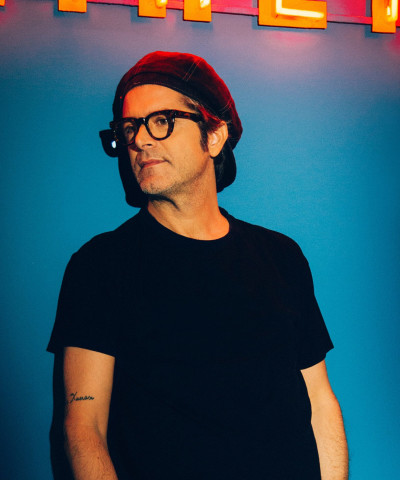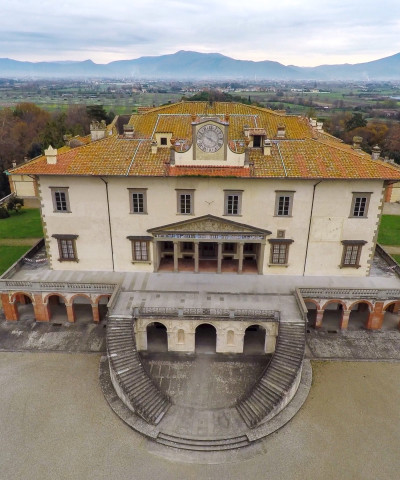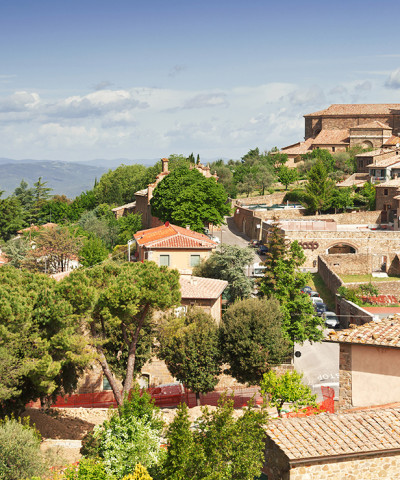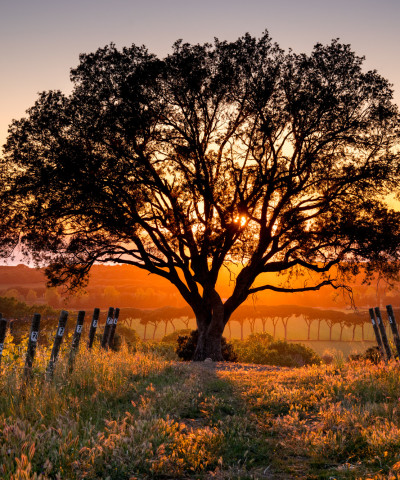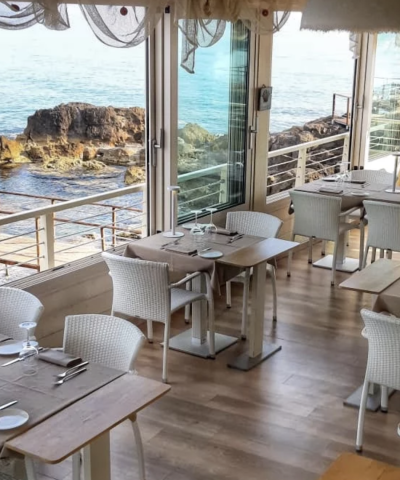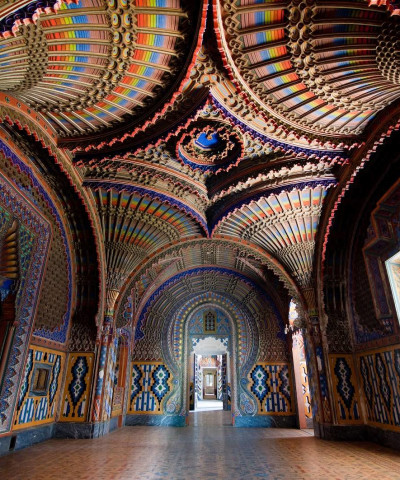FAI Autumn Days: 14 and 15 October 2023 in Tuscany
Our mini-guide to choose the FAI visits to book province by province
Saturday 15 and Sunday 16 October 2022 sees the return of the "FAI Autumn Days", the major autumn event dedicated by the FAI to Italy's cultural heritage and landscape. Among the many places open in all regions there will be palaces, villas, churches, castles, archaeological areas, museums, military sites, examples of industrial archaeology, places of education and research centres. Let's discover together the places not to be missed in Tuscany.
AREZZO
Castiglion Fiorentino, visit to the village
Castiglion Fiorentino, one of the most important villages in the Valdichiana, is an example of centuries of virtuous management of the valleys that surround it. To analyze the history of the area, visitors follow an itinerary that includes Piazza del Comune, Piazza della Collegiata, the Museum of the Pieve di S. Giuliano, the Church and part of the former monastery of S. Chiara, and finally Piazza S. Francesco. Among the sights to be admired, a mention the work Lamentation over the Dead Christ, located in the Chapel of the Blessed Sacrament of the Museum of the Pieve di San Giuliano. On Sunday, Oct. 15, at 11 a.m. there will also be a walk along the path of the ancient mills and olive trees/Val di Chio, starting from the Capuchin Church.
 Castiglion Fiorentino
Castiglion FiorentinoFIRENZE
Villa Pecori Giraldi – Museo Chini Borgo San Lorenzo
Villa Pecori Giraldi, called Villa di Rimorelli, after the name of the stream that runs behind the building, stands outside the historic center of Borgo San Lorenzo with its original entrance located on the ancient road coming from Vicchio. It is surrounded by a large park with centuries-old trees, such as cedar of Lebanon ,magnolias, and mulberry trees. The building, owned by the Municipality of Borgo San Lorenzo since 1979, has been used from 1999 until today for two functions: museum, first named after Fornaci Chini and from 2019 after Galileo Chini, and venue for conferences and various cultural events.
Casa Capponi in San Frediano – Museo storico della Guardia di Finanza
Casa Capponi historic palace in Florence on the Lungarno Soderini in Oltrarno, an area rich in architectural gems, antique and craft stores. The main elevation opens toward the Arno; to the east the building borders the headquarters of the Italian Red Cross, to the west the Parish of San Frediano in Cestello. Since 1995 it has housed the headquarters of the Interregional Command of Central-Northern Italy of the Guardia di Finanza, and since 2021 there has been a permanent exhibition chronicling the experience of the Royal Guardia di Finanza of the Grand Duchy of Tuscany.
Palazzo Capponi in San Frediano, Red Cross Headquarters
The Red Cross was founded in Italy, on June 15, 1864 under the name "Associazione Italiana di Soccorso pei militari feriti e malati in tempo di guerra." For more than a century, the Florentine C.R.I. has had its headquarters in the ancient Palazzo Capponi, in Borgo San Frediano, a predominantly working-class neighborhood, the Oltrarno, which in this street reveals, its origin leaning against the walls, had its first city walls in 1258,and its urban fabric was enriched with buildings constructed by the increasingly wealthy city bourgeoisie, merchants and bankers, future holders of the city government. The vicissitudes of the building, according to established art-historical literature, would have begun with the construction ordered by the Marquis of Altopascio, Bartolomeo Capponi (1408 - 1487), who belonged to the important and extremely ramified family that, remembered in Florence since the first half of the thirteenth century, would donate to the city some of its most prestigious representatives. The subject of subsequent renovations and extensions, the palace remained Capponi property until the 19th century when it was purchased by Giovanni Pucci, chamberlain of the City of Florence, and passed, after the death of his son Luigi, to his son-in-law Winckler. In 1919 it was sold to Prince Raffaello Torrigiani di Scilla as president of the Regional Committee of the Italian Red Cross.
 Palazzo Capponi
Palazzo CapponiVilla Kraft, Tuscany Red Cross Headquarters
The headquarters of the Italian Red Cross- Tuscany Regional Committee is a property in which insist : Villa Kraft with its outbuildings, the hospital I Fraticini, the building called I Lauri annex farmhouse. The building of greatest historical-architectural value is Villa Kraft, a fine example of nineteenth-century residential architecture, in the neo-sixteenth-century style. The imposing masonry structure is on three levels connected by an elegant internal staircase, although it has been significantly remodeled on the inside to adapt it to its different use. The elevation of the villa is elegantly divided into two side wings and a central body in which the double-ramped access staircase, a loggia with blind arcades on the second floor and an architraved loggia on the second floor, supported by refined Ionic columns, are developed.
GROSSETO
Scarlino (Grosseto), visit to the village
The medieval borgo dates back to the 12th century and the historic center, dominated by the monumental Rocca, traces the boundaries of the Pisan walls that hold, from top to bottom, the complex of the former Oratory of Santa Croce , the Domus Communis then Palazzo Pretorio today the Municipality of Scarlino, the Palazzo degli Appiani, known as del Conte, and the Convent of San Donato. Treasures outside the historic center are the site of industrial archaeology of Terra Rossa, for the storage and transport of Pyrite, and the former Puntone reclamation tollhouse now home to the Portus Scabris Museum, at Puntone di Scarlino.
Tour terra rossa e la sua pirite, strut of Scarlino
Along the coast of Scarlino, at the beginning of the scenic path that leads to the beautiful Cala Martina and Cala Violina, there is magical place: Terra Rossa. A small paradise with a breathtaking view that from its stone and brick columns goes all the way to Elba Island. You get to Cala Terra Rossa from Cala Violina and from the other coves along the way (Cala Martina and Cala Le Donne) via the scenic path that proceeds north along the coastline. Short route: From Portiglioni - Puntone di Scarlino: continue along the Giuseppe Garibaldi promenade south to the point where the road begins to climb. After about 300 meters, past the entrance to the Cala Felice beach club and the descent path to the Cala di Portiglioni cove, you will meet the dirt road on the right that leads to the Terra Rossa site.
LIVORNO
Suvereto, visit to the village
Suvereto is one of the oldest towns in the Val di Cornia. Its origins date back to the time of the collapse of the Roman Empire when, for security reasons, the coastal populations moved to the hilly areas. Its history is inextricably linked to the strong character of the population, which has always shown originality, resourcefulness and love for their country, qualities thanks to which the village became in 1201 the first free commune in northern Maremma. The itinerary provides an overview of the history, urban development and architectural stratification of the village. From its origins, with the presence of the Church of San Giusto dating back to 923, to the Coppaio, built on the site of an old building at the turn of the 18th and 19th centuries, and the Church of St. Michael the Archangel, now home to the Museum of Sacred Art, built in 1881 by the Compagnia della Misericordia. The historic center is well preserved, and it will be possible to walk through the alleys of the medieval village to discover the places that still characterize it today.
 Suvereto
SuveretoCantina Petra, Suvereto – access reserved for Fai members
Petra is a natural oasis that covers 300 hectares encompassing the Metalliferous Hills belt, Montioni Park, Poggio Tre Cancelli Reserve and Sterpaia Park. In this ecosystem, the dream of Francesca Moretti and her family comes to life. Petra is a natural oasis nestled in the territory of the Val di Cornia and and the winery is a soft, respectful, low-impact architecture, like the road from the bunch to the bottle.
LUCCA
Chiesa e museo di San Cassiano di Controne
The church of San Cassiano di Controne is the first historically documented church in the Lima Valley, along with the parish of Santa Giulia, on which it depended since San Cassiano was never elevated to the rank of Pieve. The document attesting to its existence was written in 772. The present building is the result of the enlargement of an earlier church of which traces remain outside the church. In the extension, the large bell tower, built in 1030, was incorporated within the perimeter of the church, of which it occupies the entire front left corner, as evidenced by an engraving on a cornerstone.
 Chiesa e museo di San Cassiano di Controne
Chiesa e museo di San Cassiano di Controne Borgo a Mozzano, visits to the village
The village of Rocca in the municipality of Borgo a Mozzano, rises 320 m. above sea level, on the right bank of the Serchio River, in the valley of the same name, a few kilometers from the main town Borgo a Mozzano and on the ancient Via Clodia, today Via Matildica and Via del Volto Santo. The village of Rocca refers to the ancient Rocca dei Suffredinghi, still present in some remains, and since ancient times has been an important place of passage along the directive of Roman origin that, from Lucca, led to Luni. Its dominant and panoramic position made it a strategic place of great importance.
Castello di Nozzano
The Castle of Nozzano rises a few kilometers from the Walls of Lucca, at the top of a low relief with a geological formation unique to the area: the hill originated from the thrust of rocky magmatic material, as can be seen along the perimeter of the fortress at the top of the hill. The place is considered of great importance already by the Romans, who built a military outpost here; etymologically, the name "Nozzano" goes back to "Noctianus," a local landowner.
 castello di nozzano
castello di nozzanoGipsoteca Passaglia
The Gipsoteca houses more than 500 plaster casts including groups, statues, bas-reliefs, ornaments, anatomies and details of various kinds documented by a historical archive, an integral part of the property. The history of the gypsotheque has always been intertwined with that of the art school: the beginning of the collection dates back to 1640, the year in which Pietro Paolini's School of Drawing and Painting was founded. In the 18th century the school became the Lucchese Academy of Painting and Drawing then the Art Institute after the Unification of Italy. Since 1999, a process of rearrangement, restoration and promotion of the Gipsoteca was initiated under the guidance of the Superintendence. In 2003, the "Matteo Civitali" Hall was set up.
Teatrino di Vetriano, Pescaglia
Its history dates back to 1889, when engineer Virgilio Biagini entrusted the small community with a barn to be used as a theater. The inhabitants, mostly farmers, warmly welcomed the donation, giving birth to a "Società Paesana," which self-taxed with one-time payments of 2 liras and then 50 cents a month to build the theater plus labor. Thanks to the industriousness of the inhabitants, the little theater was built in just one year, and in 1890 the stage, framed by neoclassical decorations, could host the first performances. These were, for the most part, prose plays and musical comedies. Guided Tour Saturday from 2 to 6 pm and Sunday from 11:30 am to 1:30 pm and 2 to 6 pm.
Museo dei bozzetti, Pietrasanta
The Museo dei Bozzetti and Chiostro di Sant'Agostino stand in the heart of the charming village of Pietrasanta, within an ancient monastic complex. This cultural gem stands at the foot of the picturesque Apuan Alps, embracing the natural beauty of the area. The monastic complex, originally built in the 15th century, has undergone a remarkable transformation to become the place of art and culture it is today. The "Pierluigi Gherardi" Museum of Sketches was founded in 1984 and is located within the Sant'Agostino complex.
 Museo dei bozzetti
Museo dei bozzettiMASSA
Rifugio anti-aereo della Martana
The Martana Air Raid Shelter, located in the historic center of the city of Massa, is the largest air raid shelter built in the province, capable of housing thousands of people. It was built in about a year's work between 1942 and 1943 by Venetian miners from Belluno. After the order of displacement of the city issued in September 1944 by the German military command, the shelter was occupied by Nazi troops, who installed field kitchens there and quartered their soldiers engaged in garrisoning the Gothic Line. After the end of the war, the shelter remained closed for sixty years being restored with purpose in 2006.
PISA
Teatro Verdi e la mattonaia, visit to the restorations by Massimo Carmassi
The restoration of the Verdi Theater, a meticulous effort to adapt to new regulations and requirements for safety standards and service spaces, preserves material and spatial characteristics with such dedication that one could walk a long path inside the theater without finding the slightest sign of intervention by the architect. Carmassi, with the deep conviction that the value of the 19th-century theater lies in the authenticity of the materials and the integrity of the main spaces, achieves an elegant balance between pure preservation and design, using light materials such as steel and glass. For its part, the San Michele in Borgo complex can be considered the highest expression of Massimo Carmassi's research on the urban fabric of Pisa and especially on the tower-house typology: weaving a deep dialogue with the city's history, he applies the most modern academic theories of restoration, taking care of the details with a handcrafted approach.
PISTOIA
Frantoio dell’Azienda Agricola “La Dispensa”, Lamporecchio
On the Via di Giugnano , which connects San Baronto with Lamporecchio and Larciano winding through the typical hills of Montalbano, stands a large three-story stone farmhouse that dates back to 1700 and that a careful restoration has brought back to its ancient austere beauty. Immersed in the dark shade of the holm oaks and the silvery green of the olive trees, it dominates the plain below where well distinguished in the distance is the Villa Rospigliosi of Spicchio to which it was connected by an alley road that passed by the church of San Baronto. Once belonging to the noble family of Count Manni, who owned 47 farms and the castle of Carraia here, it is now home to " La Dispensa" , of Stefano Spinelli, a farm that, mutatis mutandis, fully continues the Tuscan vill-farm tradition. In an agricultural setting of about 19 hectares consisting of 3,000 olive trees, pasture and woodland, the stable and oil mill find a privileged place.
Pieve di San Michele Arcangelo, Ponte Buggianese
Having reached the small historic center of Ponte Buggianese by the old road from Chiesina, after crossing the bridge over the Pescia, the portico of the 17th-century parish church of San Michele Arcangelo welcomes today's visitor. It once offered shelter to wayfarers from those lands wrested from the Padule di Fucecchio, to pilgrims who came to ask thanks to the 'miraculous' image of the Madonna del Buonconsiglio, still venerated today on the Baroque altar located in the chapel at the end of the right aisle.
Giardino di Paola, Ponte Buggianese
Paola's garden is located at the southern end of the province of Pistoia where the Tuscan countryside stretches toward the Padule di Fucecchio, a marshy area of great environmental, historical and scenic value. Entirely flat, the garden fits into the context of the surrounding fields and crops that represent the traditional rural vocation of Ponte Buggianese. For the owner, this garden represents a natural evolution of the deep rural roots of the generations that have followed one another since the 1800s: a farmhouse in the heart of the Tuscan countryside surrounded by fields. Paola, an art historian with a specialization in the restoration of historic gardens, wanted to respect this place and its history. In fact, she chose to raise the apparent humility of some tree essences to a beauty aimed, first of all, at arousing harmony. She accomplished this by recovering forgotten varieties, letting that environment, and its past, dictate the appropriate insertions and juxtapositions.
Serravalle Pistoiese, visit to the borgo
The Borgo di Serravalle represents a borderland between the Florence-Prato-Pistoia plain and the Valdinievole, which is why over the centuries its strategic position has been fundamental to its development and that of the city of Pistoia. The area is characterized by hilly areas that also see some medieval villages such as Castellina, Serravalle and Vinacciano among its borders.
PRATO
ITIS Buzzi
The ITIS "T. Buzzi" is located in Prato, near the "Bisenzio" river, in an area born of postwar urban expansion, where the "Viale della Repubblica," starting at the height of the "L. Pecci", reaches the "Petrino Bridge", resurrected on Roman and medieval remains, beyond which insists a semicircular complex of communicating buildings, just before the "Direttissima" railway line, lying in the picturesque foothill landscape, dominated by the characteristic yoke of the "Calvana".
Ospedale Misericordia e Dolce
The Old Hospital of Prato is located in the southwest area of the city's 14th-century Walls between Bastion S. Giusto and Porta al Leone, squeezed between the convent of San Niccolò and Santa Caterina in S. Pierino. The opening, made possible thanks to the collaboration with REGIONE TOSCANA, is a real estate complex of medieval origin to which the "New Hospital," a modern concrete structure of more than 1,000 beds connected to the historic "Misericordia e Dolce," was added in the 1970s due to the growth of Prato's population. It was demolished in 2013 for the rise of the New S. Stefano Hospital, which is an organic part of the four new hospitals in Tuscany called H4.This demolition allowed the City not to have within the Walls a hospital incompatible with the SSN by allocating the freed area as an Urban Green Park. The Old "Misericordia e Dolce" has regained its historic physiognomy, now used for administrative offices and territorial services without hospitalization.
Palazzo Vaj
Palazzo Vaj is one of the most prestigious real estate complexes in the city of Prato. Located in the heart of the city, it represents one of the largest buildings in the historic center. The current building--formerly the aristocratic residence of the Vaj Family--dates back to the early 18th century with the main front facing the courtyard on Via Verdi and the creation of the Italian garden surrounded by walls adorned with stone statues. Three of these, two lions and a reproduction of Michelangelo's David, are still preserved inside the palace. Part of the structure of the palace rests directly on the 12th-century city wall, traces of which are still clearly visible in the basement. Toward the end of the 18th century the Vaj family decided to expand the palace with the acquisition of the church of San Giorgio. Arch. Ristorini was commissioned, who enhanced the front on Pugliesi Street, which became the main facade of the Palace.
 palazzo vaj
palazzo vaj SIENA
Torre e Casa Campatelli, San Gimignano
Of the 72 ancient towers that have made San Gimignano famous, only 14 have survived to this day to connote the unmistakable profile of Italy's most famous medieval town. Prominent among them is that of the Campatellis, a family of Florentine businessmen and landowners who from the early 19th century linked their name to this 28-meter tower-house erected in the mid-12th century, today the only one to have preserved the building's original single volume, completely empty.
Torrita di Siena, visit to the village
Torrita di Siena is a town nestled in the countryside of the southern province of Siena. Well recognizable by its medieval ring of walls, it retains evidence of its past in the main square as well as in the many small churches. Important are the memories of Torrita's history, which loyally followed the history of the city of Siena, and of its characters such as the well-known "brigand" Ghino di Tacco of Dante's memory Thanks to the availability of the entire village, visitors can fully enjoy the hospitality and atmosphere of this village, where time seems to have stopped.
For visits, reservations are required at www.giornatefai.it









